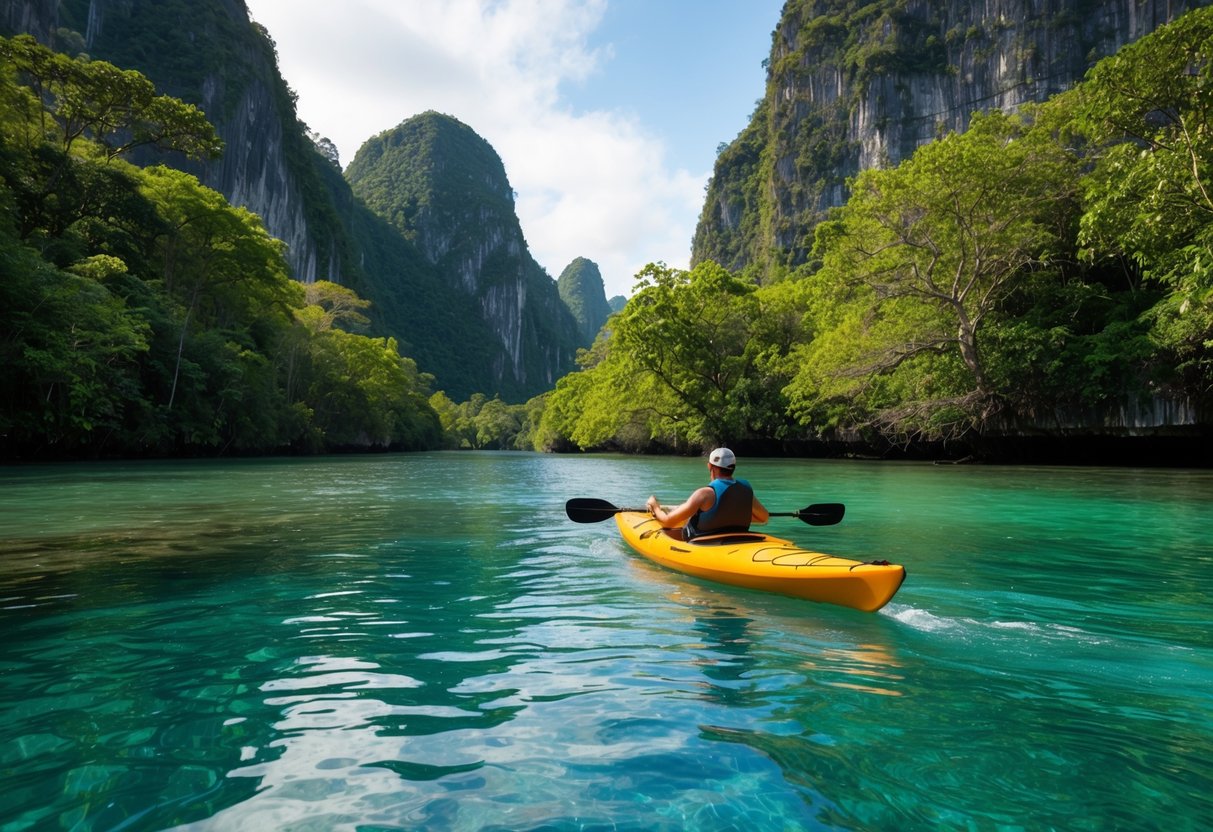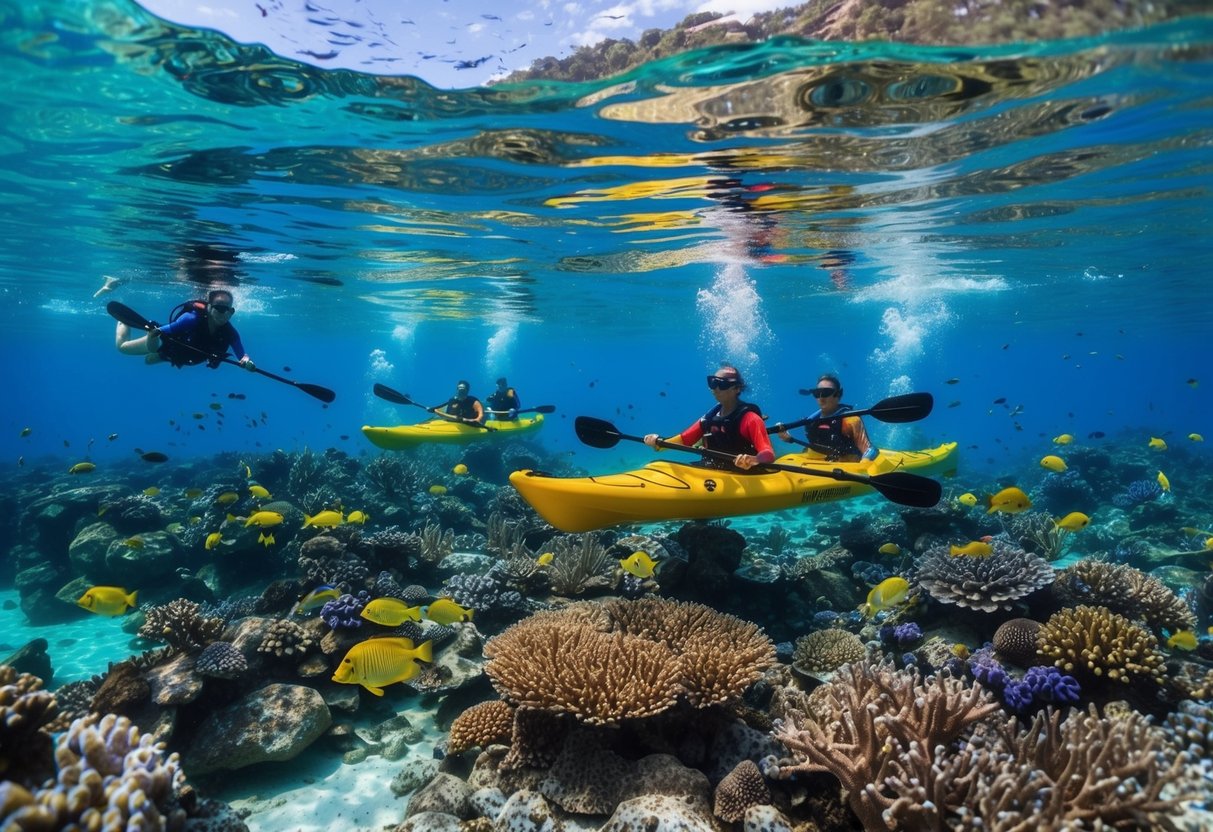
Navigating the Rivers of Southeast Asia
Rivers in Southeast Asia provide an exciting playground for kayaking enthusiasts. In Thailand, the Pai River offers a mix of calm stretches and thrilling rapids, making it ideal for both beginners and seasoned paddlers. Along its course, kayakers can enjoy lush landscapes, rich biodiversity, and glimpses of local culture.
Whether navigating narrow passages or broader waters, these river routes are known for their enchanting scenery. Mangroves and unique rock formations enhance the experience. Safety is paramount, so it’s important to be aware of water conditions and local wildlife. Adventure seekers take on different sections based on skill levels, ensuring a fitting challenge for everyone.
Lake Kayaking in Khao Sok National Park
Khao Sok National Park is a kayaker’s dream, renowned for Cheow Lan Lake. This vast, man-made lake boasts emerald waters and towering limestone cliffs, offering a peaceful retreat. Paddling along its calm surface is an experience marked by stunning vistas and tranquility.
The lake is home to diverse wildlife such as gibbons and hornbills, occasionally spotted from a kayak. Besides its natural charm, the area is rich in history and culture, enhancing the overall adventure. Many prefer lake kayaking here for the serene experience and opportunity to immerse in nature. Accommodations like floating bungalows are available, allowing visitors to extend their stay and exploration.
Marine Life and Coral Reefs

Thailand offers a stunning variety of marine life and breathtaking coral reefs that attract kayaking enthusiasts from around the world. From colorful fish to delicate corals, the underwater landscape is as mesmerizing as it is diverse. Exploring these aquatic wonders provides a window into an enchanting part of the natural world.
Snorkeling Excursions
Snorkeling excursions in Thailand allow visitors to witness the vibrant coral reefs up close. In places like Koh Tao and the Similan Islands, snorkelers can glide through clear waters and observe a kaleidoscope of tropical fish weaving through the corals. Butterflyfish, parrotfish, and angelfish are commonly seen, each adding a splash of color to the underwater scene. Some areas also offer glimpses of larger marine creatures such as sea turtles and reef sharks, offering an unforgettable snorkeling adventure. These excursions often include guided tours that provide insights into the ecosystem, ensuring a more enriching experience. Proper equipment and local guides enhance the enjoyment while promoting safety, contributing to an immersive encounter with Thailand’s marine biodiversity.
Responsible Kayaking Near Reefs
Kayakers must prioritize the protection of coral reefs when exploring these sensitive ecosystems. Responsible practices include navigating carefully to avoid contact with the reefs, as even a slight touch can damage these delicate structures. Using anchors sparingly and maintaining a safe distance helps preserve the habitats for future generations. Many kayaking tours emphasize the importance of environmental stewardship, providing instructions on minimizing impact and fostering a sustainable approach to exploring marine life. Kayakers are encouraged to support eco-friendly tours, which promote reef conservation efforts and educate participants about their role in preserving these natural wonders. By respecting guidelines and engaging responsibly, adventurers can enjoy the beauty of the reefs without causing harm.
Safety First: Guidelines for Responsible Kayaking
Safety is a top priority when it comes to kayaking adventures. Wearing a life jacket at all times is essential. It can save lives, providing crucial buoyancy and support in emergencies.
Responsible kayaking also means being aware of the environment and respecting local wildlife. Paddlers should maintain a safe distance from animals and avoid disturbing their natural habitats. By adhering to local guidelines, kayakers can help preserve the delicate ecosystems they explore.
When joining kayaking tours, participants should listen carefully to the briefing provided by professional guides. These guides are knowledgeable about local conditions and can offer important advice on safely navigating waters and avoiding potential hazards such as strong currents or hidden rocks.
Weather conditions play a crucial role in kayaking safety. It’s vital to check the forecast before heading out and to be prepared for sudden changes. Thunderstorms and high winds can pose significant risks, so paddlers should plan their trips accordingly and be ready to head to shore if conditions become dangerous.
Navigating safely also involves understanding one’s skill level. It’s important for paddlers to choose routes that match their experience and ability. Beginners should start with calm waters and gradually work their way up to more challenging environments with guidance and proper training.
Communication is key when out on the water. Kayakers should always let someone know their route and expected return time. Carrying a whistle or a light can be helpful in signaling for assistance if necessary. These measures ensure both the individual and those around them remain safe during the adventure.